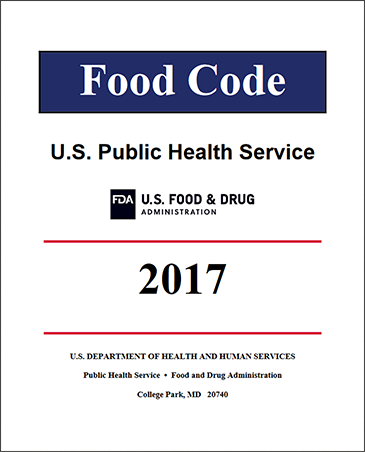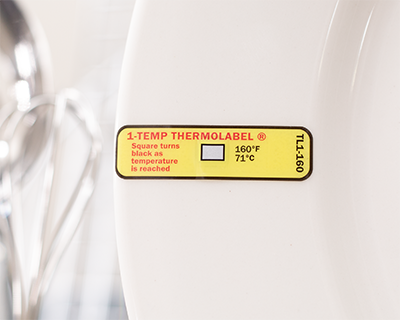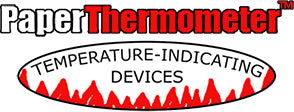What does Section 4.7 of the FDA Food Code Mean?

The FDA Food Code is critical to any food service operation in the US. It contains the regulations that need to be followed to keep customers safe. For dish sanitation there is one section of the Food Code that is very important to understand clearly. Lets have a look at Section 4.7 of the FDA Food Code and find out what it has to say about temperature labels.
So what does section 4-703.11 say? This section gives the standards for sanitizing food contact surfaces in a commercial dishwasher. There are a few methods of sanitation, here the method we are concerned with is (B), which describes hot water sanitation in a dish machine. This is considered to be the best option for dish sanitation and is the most common. The text of this section is as follows:
(B) Hot water mechanical operations by being cycled through EQUIPMENT that is set up as specified under §§ 4-501.15, 4- 501.112, and 4-501.113 and achieving a UTENSIL surface temperature of 71°C (160°F) as measured by an irreversible registering temperature indicator; P or
We are going to break this section down to better understand it. “Hot water mechanical operations”. This phrase is identifying what dish sanitation method this section is applicable to. So this is for a dishwasher, which is a mechanical operation, instead of a sink which would be a manual operation, and one that sanitizes using hot water instead of chemicals such as chlorine.
Next are some references to other sections of the Food Code that relate to how the equipment (dishwasher) is set up. Rather than reproduce these sections here fully they have been summarized below:
4-501.15 can be summarized as requiring that you are using the dishwasher in accordance with the information the manufacturer of the machine has provided. Basically that you have the machine set up and are using it as it was designed to be used.
4- 501.112 gives the requirements for the temperature range of the hot water sanitizing rinse. This sets a ceiling of 194°F and lists different lower ends at 165°F and 180°F depending on machine type.
4- 501.113 gives requirements for the flow pressure of the final rinse. The requirement is to be within the manufacturers specified range as well as no lower than 5 pounds per square inch and no higher than 30 pounds per square inch.

We next see the important 71°C surface temperature that we need to test for. It is listed with its Fahrenheit equivalent of 160°F. You will find the temperature in Fahrenheit and Celsius printed on each of our temperature labels for dishwasher sanitation.
Here we come to a critical point of this section of the Food Code: “as measured by an irreversible registering temperature indicator”. So what is this referring to? The temperature that we are measuring for must be recorded by something that is an “irreversible registering temperature indicator”. A “temperature indicator” is a device that indicates whether or not a specified temperature has been reach. These can be in many formats, in the case of food service dish sanitation, the temperature indicator is typically a temperature label. These are adhesive stickers that have an area that will change color to show a temperature has been reached. “Irreversible registering” means that the temperature, once indicated, cannot have that recording of temperature reversed. So the indicator needs to be one that cannot be reset after the test. Therefore, to follow the standards of this section of the FDA Food Code, you need to use a temperature indicator that measures 71°C/160°F and keeps that reading permanently after the test. Although not specified here, it is common to keep the temperature label as a record that the dish sanitation test has been conducted. We have a handy sheet to print here that can be used in a dish temperature log book. The sheet has an area to attach each temperature label after testing.

OK, so that is what we need to use to follow this section of the Food Code, so what can't we use? Specifically, FDA Food Code Section 4.7 excludes using any means of measuring or indicating temperature that can be reversed such as probe thermometers, reversible temperature indicating labels, conventional glass bulb thermometers, etc. All of these can be reset after reaching a temperature and therefore do not qualify under section 4.7 of the FDA Food Code to be used to verify dish sanitation. Temperature labels such as Thermolabel® dishwasher test strips are the best choice for verifying dish sanitation.
That's it, an explanation of the FDA Food Code section that specifies what you need to do to keep your patrons safe when using a hot water sanitation dishwasher at your food service location. If you want more information on using temperature labels for food service dish sanitation, click here.
Here is a link directly to the dish sanitation temperature label section of the Food Code: Section 4.7 of the Food Code
If you want to have a look at the various irreversible registering temperature indicators for dish sanitation that Paper Thermometer has available, click here.
